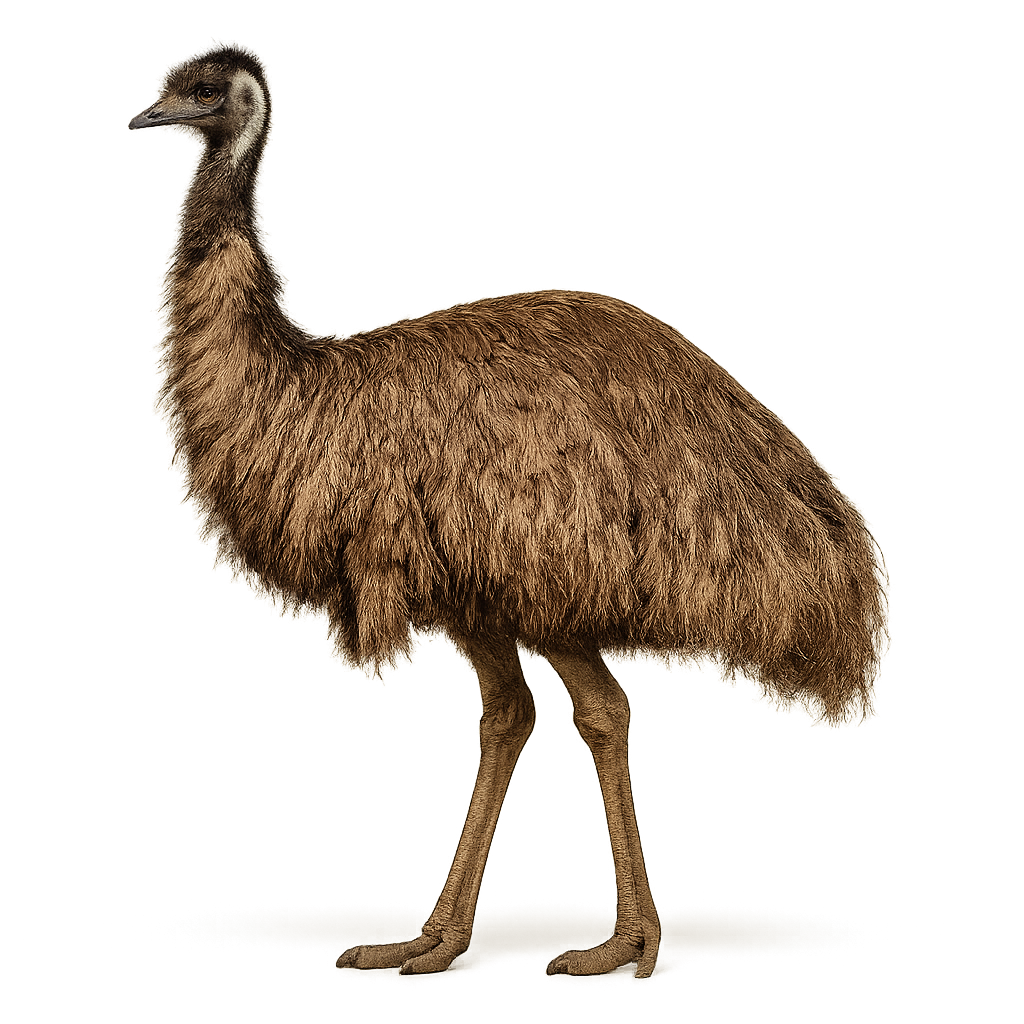Your wildlife photography guide.
Explore the emu in detail, study its behavior, prepare your shots.
Where to observe and photograph the emu in the wild
Learn where and when to spot the emu in the wild, how to identify the species based on distinctive features, and what natural environments it inhabits. The WildlifePhotographer app offers tailored photography tips that reflect the emu’s behavior, helping you capture better wildlife images. Explore the full species profile for key information including description, habitat, active periods, and approach techniques.
Emu
Scientific name: Dromaius novaehollandiae

IUCN Status: Least Concern
Family: CASUARIIDAE
Group: Birds
Sensitivity to human approach: Suspicious
Minimum approach distance: 30 m
Courtship display: December to January
Incubation: 48–56 jours
Hatchings: February to March
Habitat:
Savannas, forests, and open areas of Australia, mainly in arid and semi-arid zones
Activity period :
Primarily active during the day, with peak activity in the morning and late afternoon.
Identification and description:
The Emu is a large flightless bird, belonging to the ratite family, which also includes the ostrich and the kiwi. It typically stands between 1.5 and 1.9 meters tall and weighs between 40 and 60 kg. Its plumage is generally brown-gray, with fine feathers that give it a slightly ruffled appearance. The Emu is recognizable by its long bare neck and small wings, which prevent it from flying. It is endemic to Australia, where it inhabits a variety of environments, from open forests to savannas and semi-desert areas. This bird is primarily herbivorous, feeding on seeds, fruits, roots, and young shoots. Although it cannot fly, the Emu is a fast runner, capable of reaching speeds up to 50 km/h over short distances. It is often solitary or lives in small groups, except during the breeding season. The Emu plays an important role in seed dispersal, contributing to the regeneration of vegetation. While the species is currently listed as of least concern, it faces threats such as habitat loss, hunting, and collisions with vehicles.
Recommended lens:
200 mm – adjust based on distance, desired framing (portrait or habitat), and approach conditions.
Photography tips:
To photograph the emu, a telephoto lens is ideal for capturing its quick movements, long strides, and group behavior in open landscapes.
Use soft morning or evening light to take sharp, well-exposed photos that highlight the texture of its feathers and its distinctive silhouette.
Be discreet and avoid disturbing their natural behavior, especially during the breeding season, when males incubate eggs on the ground and can be particularly vigilant.
The emu is classified as Least Concern by the IUCN, but it is important to respect its natural behavior and minimize disturbance to help protect its habitat.
The WildlifePhotographer App is coming soon!
Be the first to explore the best nature spots, track rutting seasons, log your observations, and observe more wildlife.
Already 1 439 wildlife lovers subscribed worldwide

